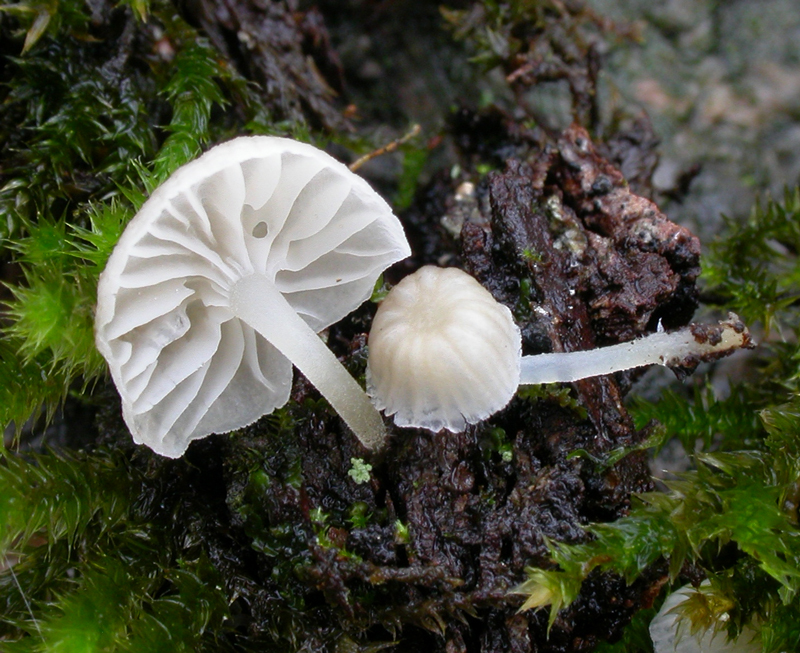Phloeomana hiemalis
Phloeomana hiemalis
Description
Cheilocystidia, hyphae of the pileipellis, spores, and caulocystidia.
Cap 2-10 mm across, campanulate, conical or convex to applanate, with or without a small papilla, shallowly sulcate, translucent-striate, glabrescent, rather variable in colours, dark brown with the centre blackish brown, turning paler brown with age or at first pale grey-brown and dark brown at the centre, paler with age, becoming very pale brown to beige, mostly darker at the centre, sometimes entirely white, the margin usually white. Gills 8-14 reaching the stem, adnexed to adnate, rarely decurrent with a short tooth, pale grey to white. Stem 10-35 x 0.5-1 mm, cylindrical, equal, pruinose or minutely puberulous, glabrescent except at apex, white, occasionally yellowish towards the base with age, here covered with long, coarse, flexuous white fibrils. Odour indistinctive. Basidia 25-35 x 6-7 µm, clavate, 2-spored (rarely 4-spored). Spores 7-9.5 x 5.2-7 µm, Q = 1.1-1.5, Qav ˜ 1.3, broadly pip-shaped, non-amyloid. Cheilocystidia 30-50 x 9-14 µm, forming a sterile band, fusiform to utriform, smooth, usually broadly rounded. Pleurocystidia similar when present. Lamellar trama weakly dextrinoid. Hyphae of the pileipellis 2-4 µm wide, sparsely diverticulate, covered with usually simple, more rarely furcate, cylindrical excrescences 2-9 x 1-3 µm. Hyphae of the cortical layer of the stem 2-6 µm wide, smooth, terminal cells (caulocystidia) 12-23 x 4-10 µm, variously shaped, generally inflated. Clamps absent in the 2-spored form, present in 4-spored form.
Ecology and distribution
On moss covered trunks of a wide range of deciduous trees. Summer to winter, mostly late in season. Widespread and common in south-east Norway, found north to Nordland.




